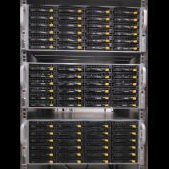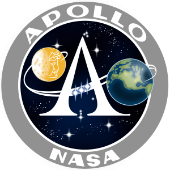All Activity
- Past hour
-
Schau mal hier. Diverse Optimierungsmechanismen für Windows VMs werden hier explizit beschrieben: https://docs.unraid.net/unraid-os/manual/vm-support/ Im Übrigen stehe ich nach wie vor zu meinen oben getroffenen Aussagen bzgl. CPU Passthrough ... Ob Threads zwischen 8 Kernen springen oder 128 spielt überhaupt keine Rolle. Technisch ist das ein Kontext-Wechsel des Instruction Pointers und den Registern sowie Pages. Das ist egal wohin der Wechsel erfolgt - ob zu Kern/HT #4 oder #112. In dem einen Fall stehen aber nur 8 zur Auswahl, im anderen Fall 128. Ist wie am Buffet. Wenn von den 8 Schüsseln gerade 2 leer sind ist das blöder als bei 128 Schüsseln
-
Erst mal vielen Dank das Du mir schreibst , ja diese Seite hatte ich gesehen aber in der Tat habe ich diese Ordnerstruktur nicht. die vom Autor angesprochenen Pfade hab ich nicht , na ja ich probiere es mal weiter
-
顺便问一下,默认unraid设置中的这个等待的时间单位是啥?秒?分钟?小时?
- Today
-
But does it work in the default configuration?
-
@FlorianHEDarf ich mich nach dem Status erkundigen, hast du deine Maschine neu aufgesetzt und läuft sie wieder zufriedenstellend? Ziemlich genau 1 Tag nach diesem Topic hat meine Maschine angefangen langsamer zu werden (wie verhext). Und im Zustand ohne laufenden Apps trotzdem sehr beschäfftigt zu wirken. Wesshalb ich meine Maschine auch wieder neu aufsetzen muss, ist mir ein Rätsel, nur im abgemeldetem Zustand kann der CPU wieder durchathmen und ist bei 0% Im Taskmanager erhalte ich ein anderes Bild wie auf dem Dashboard.. Ich werde noch ein paar Tests machen befor ich den Pc neu aufsetze. Z.B. (da es im abgemeldetem Zustand OK ist) einen anderen Benutzer anlegen. Ich verdächtige auch den automatischen Optimierungsprozess der Disk (SSD defragmentieren), könnte auch schlecht sein für eine vdisk auf dauer. Bin für weitere Tests offen. Grüsse
-
Drive Failure + Parity Failure - Am I SOL?
joydivisionfan69 replied to joydivisionfan69's topic in General Support
I took your advice and am running ddrescue on disk7 via an Ubuntu live disk. The rescue is moving at full speed and no errors yet. Everything's going smoothly so far, fingers crossed 🙏 -
Thank you @itimpi!! I didn't pick up on this! Glad it's straightforward....
-
The old Default but not changed at the Moment in New Configs is system/docker. I hope this come with 6.13. The new Default from Documentation/Release Notes from 6.12 is /docker. For example /mnt/user/system/docker or /mnt/cache/system/docker and /mnt/user/docker or /mnt/cache/docker user should have exclusive Shares enabled for prevent Performance and other Issues. All Requirements ... for this, Migration ... is explained in the Documentation and the linked Threads from me. I recommended to change/migrated why you are on the Start and not many Docker Containers at the Moment. The User Data from the Docker Container are on appdata. The Docker Directory Folder/Image only have the Docker Images and no User Data. Only Custom Config like Autostart, Delay you are created new after removed the old Folder or changed/created to the new Location. With the overview in ZFS Master Plugin you are seen that creation correctly. You see the Docker Folder and the Legacy .... Snapshots under this and not under the actually from your Screenshot. After the Migration completed and worked, you can excluded from showing and have a clean List. You can converted the Folders/Shares on the ZFS Device to Datasets when he was not created automatically. This was explained to in the linked Thread. Don't touch the Docker Directory/Folder in this Steps. He not neaded a convertation to Dataset and managed by the ZFS Docker Service. As far as I know. If you have any further questions, just ask, and we are helped.
-
Regarding UD, I'm not sure if you can hide drives from there - I don't know how that plugin selects the drives to display or not. Looks like there is no way at the moment: Regarding Globbing, you need to escape the globbing characters as follows: mergerfs -o cache.files=partial,dropcacheonclose=true,category.create=mfs /mnt/disks/OfflineBU\* /mnt/addons/BUPool See also here for more details: https://github.com/trapexit/mergerfs#globbing
-
Besser ein Single oder Dual Rank Modul verbauen? https://www.mindfactory.de/product_info.php/16GB-Crucial-DDR4-3200-DIMM-CL22-Single_1372350.html https://www.mindfactory.de/product_info.php/16GB-Crucial-DDR4-3200-DIMM-CL22-Single_1318371.html Weiß jemand ob das einen Unterschied macht? Verbraucht wahrscheinlich auch mehr Strom das Dual Rank Modul.
-
sabonim38 started following Changing Appdata folders name
-
So I have a few docker container, which appdata folder is called "binhex-xxx" or similar. I would like to change all appdata folders, so they don't have any thing in front of the name. My plan was to copy everything in the "binhex-xxx" folder to a new folder "xxx" and then edit the docker container to point to the new appdata folder "xxx" The docker container is working fine, but it would just be easier for me to have appdata folders, which I can sort alphabetic - I'm not changing anything, if it will cause problems... I was planning to create an flash-drive backup after and before also...
-
I have same issue, by some reason lan IP option not working, even with subnets enabled what can be wrong? I entered 3 commands from config option from Tailsale website, but no luck to make it running with local IP Can be this due to I have other tailscale instance on other unraid pc, but configured in Docker? Exit node set to PC which I currently use Lol, when I randomly unticked in Tailscale windows App Use Tailscale subnets it start working
-
This must be an issue with the order that the USB disks are found at the hardware level. I find that if I reboot, normally once, but sometimes twice, everything just works perfectly, all the disks are found in the right order etc. its a shame this cannot be fixed somehow as using USB enclosures for low throughput needs are a cheap solution with Unraid.
-
God_TM started following 6.12.4 - Gets unresponsive (Have to Cut power & hard reboot)
-
God_TM started following Terminal/Logs Popup Windows Instantly Closing and nginx running out of shared memory
-
+1 Share quotas are table stakes and required for a proper NAS system.
-
I see far to often, both here and on other forums people asking questions on how get docker applications, that are not available on the community applications page. I know that the answer as available in a few places on this forum, but honesty, it not that easy to find, so I'd though I'd make a guide that I can link people. This guide will hopefully provide enough information to not only get your container up and running, but help you understand how containers are mapped to to your unRAID system. Also I'm happy to admit that I don't know everything, there is a good chance that the way I have done stuff here is not the best way, so feel free to leave feedback to improve this guide. To start off, I'll clarify the nomenclature, as i regularly see people confusing terms. Nomenclature host: In the case of this guide, this host refers to the unRAID server. docker image: Think if this as the template for the docker installation docker container: An instance of a docker image, multiple containers might run from the same docker image persistent data: This is data that is retained (not removed) Interpreting the Docker or Docker compose information for unRAID The image that you are trying to install may have provide a docker run command or docker-compose config in its documentation. These often get a container up and running pretty quick and is usually all that is needed but I would recommend reading any documentation so that you are at least aware of what each part does. I have an example of each below that I have colour coded parts to make it easier. red: Host path/port blue: container path/port green: Environmental Variables purple: Image source grey: my comments, prefixed with # Docker run command docker run -d \ #'-d' just run the command detached, you can ignore this -p 8080:8080 \ #these are not always the same (you might se 8080:80 for example) -v /location/of/trainingData:/usr/share/tessdata \ -v /location/of/extraConfigs:/configs \ -v /location/of/logs:/logs \ -e DOCKER_ENABLE_SECURITY=false \ -e INSTALL_BOOK_AND_ADVANCED_HTML_OPS=false \ --name stirling-pdf \ frooodle/s-pdf:latest You may also find this represented as a single line. docker run -d -p 8080:8080 -v /location/of/trainingData:/usr/share/tessdata -v /location/of/extraConfigs:/configs -v /location/of/logs:/logs -e DOCKER_ENABLE_SECURITY=false -e INSTALL_BOOK_AND_ADVANCED_HTML_OPS=false --name stirling-pdf frooodle/s-pdf:latest Docker-Compose version: '3.3' #part of docker-compose, ignore this services: #part of docker-compose, ignore this stirling-pdf: image: frooodle/s-pdf:latest ports: - '8080:8080' volumes: - /location/of/trainingData:/usr/share/tessdata - /location/of/extraConfigs:/configs - /location/of/customFiles:/customFiles - /location/of/logs:/logs environment: - DOCKER_ENABLE_SECURITY=false - INSTALL_BOOK_AND_ADVANCED_HTML_OPS=false Adding a new docker container to unRAID Scroll to the bottom of the docker tab page in the the unRAID webUI and select "add a new container" You can leave many of the fields blank. I'll go over the important ones Name: you can use any name here, or just use the name of the image. Repository: If you are pulling the image from dockerhub, you can just use: '<author>/<repository>:latest' if the docker image you are trying to pull is from the GitHub container registry (ghcr), use: ghcr/author/repository there are also other registries such as linuxserver: lscr/author/repository If you want to use a specific release instead of the latest, specify that instead Icon URL: Not a necessity, but its nice to have for the unRAID UI, just link the url to an image you want. WebUI: http://[IP]:[PORT:8080] # replace “8080” with the container port (not the host port). This is not necessary; it will allow you to launch the webui by right clicking on the icon from the unRAID webui Extra parameters: if there are extra parameters that or not Paths/Ports/Variable you can put them in here. Post Arguments: You can most likely ignore. This will run a command on the container startup. You can use it do do things like run script or update packages Network Type: Bridge is the default type here, just use it unless you have a reason not to. Mapping Paths, Volumes and Environments for the container Volumes This maps a directory in the container to a share on your host machine. This data is persistent and remains if the container is updated or removed. location/of/extraConfigs:/configs The above line is an 1 out of the 3 directories that need to be mapped. It shows the host path and the container path separated by a colon. The left side of the colon is the host path. In this case the host path is shows as 'location/of/extraConfigs', but different authors will all show this differently. You will need to change this to the appropriate share for your unRAID machine. Typically, in unRAID, the appdata share is used for persistent docker container data: '/mnt/user/appdata', then this can be appended with a directory for each container, in this case I am going to call the directory 's-pdf', so the host path is: '/mnt/user/appdata/s-pdf' The right side of the colon, we see the container path: '/configs'. This container path should usually remain unchanged from the example that you find for your image. If you are mapping to other shares that are not appdata, maybe it’s a media folder or maybe it’s a downloads folder, its good practice is to limit the access of the share to the minimum and not just give access to the root of a share. For example, you might have a downloads share /downloads that multiple apps have access to (if you have an application (for example an FTP client), I will map this to a directory '/downloads/ftp-client/' and not the '/downloads/'. To add a mapped path to the container, scroll to the bottom of the add container page and click “Add another Path, Port Variable, Label or Device” The name field is used as identifier, you can really put anything in here, I’m not sure if there is a proper convention for it, I have commonly seen ALL_CAPS used, so that what I will do here. Config Type: Path Name: CONFIG_DIR #can be called anything Container path: /configs Host path: /mnt/user/appdata/s-pdf Access Mode: Set as required It should look something like this Repeat for all the volumes for the image that are required Ports Configuring the ports are setup similar to the paths. Left side of the colon is the host (e.g the port you might access a webUI though), the right side is the container. You can change the host port to anything that is already used unless other application need to talk to your new application, then you might have to changes some configs. Leave the container port as it is. Config Type: Port Name: WEBUI_PORT # Call this anything you want Container Port: 8080 #This will be the port number on the right side of the colon. Might not be for you. Host Port: 8080 # you can change this if port 8080 is used by another container Repeat for all ports that are required Environments Environments are basically variables that are passed thought to the container, this might be a username, password, or a value that the container uses which which is decided by the user. Left of the equals size is the key, right is the value. Config Type: Variable Name: DOCKER_ENABLE_SECURITY # you can just name this same as the Key Key: DOCKER_ENABLE_SECURITY Value: false Repeat for all variables and then press apply. FAQ Q: Help, I have 2 containers that both use the same port and but I can’t change as I have an application that talks to them over a port. A: setup a bridge connection in the unRAID network settings, this will allow you to use custom bridge network type and set an unique IP address for a container. Q: What if my image is a database that has heavy reads and writes A: instead of a the host path /mnt/user/appada/dbcontainername' you can use /mnt/cache/appada/dbcontainername'. This bypasses the overhead from the fuse filesystem, which I have found to increases performance.
-
MotorN started following [Support] ich777 - AMD Vendor Reset, CoralTPU, hpsahba,...
-
你可以在我博客找到我的联系方式,我远程帮你看看
-
太难过了,你们能不能从我提交和诊断信息中找到vnc在重启时卡死的原因呢?
-
Still no luck for me, Must be some deeper incompatibility issue specific with my mainboard/NVMe combination. Thank you anyway If I'm not wrong kernel.org must have an ASPM blacklist somewhere in their kernel code since you can report buggy devices on the mailing list. It may be wise to not override this list until getting desperate. If you can get you hands on it it may be good to implement/update it with each Unraid release since your plugin might ignore it.
-
Thanks
-
My cache drive filled up (I know, that is bad) and apparently corrupted all of my docker. I cannot start, stop update or delete any of my dockers. Not really sure where to go as nothing is working right now. I did a little research on correcting the images and they start with deleting the docker image. Unfortunately I can't do that, when I click the YES, DELETE IT! button, nothing happens. Any ideas on how to start correcting this issue? Many thanks.











